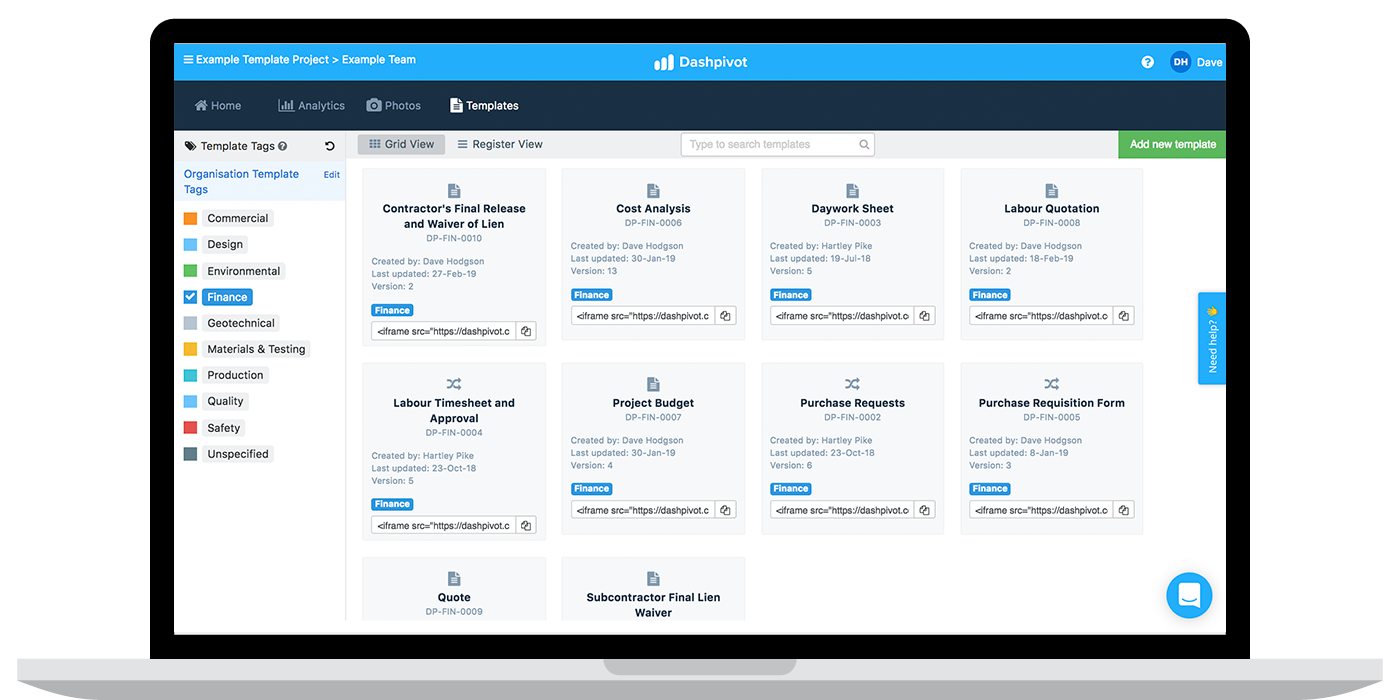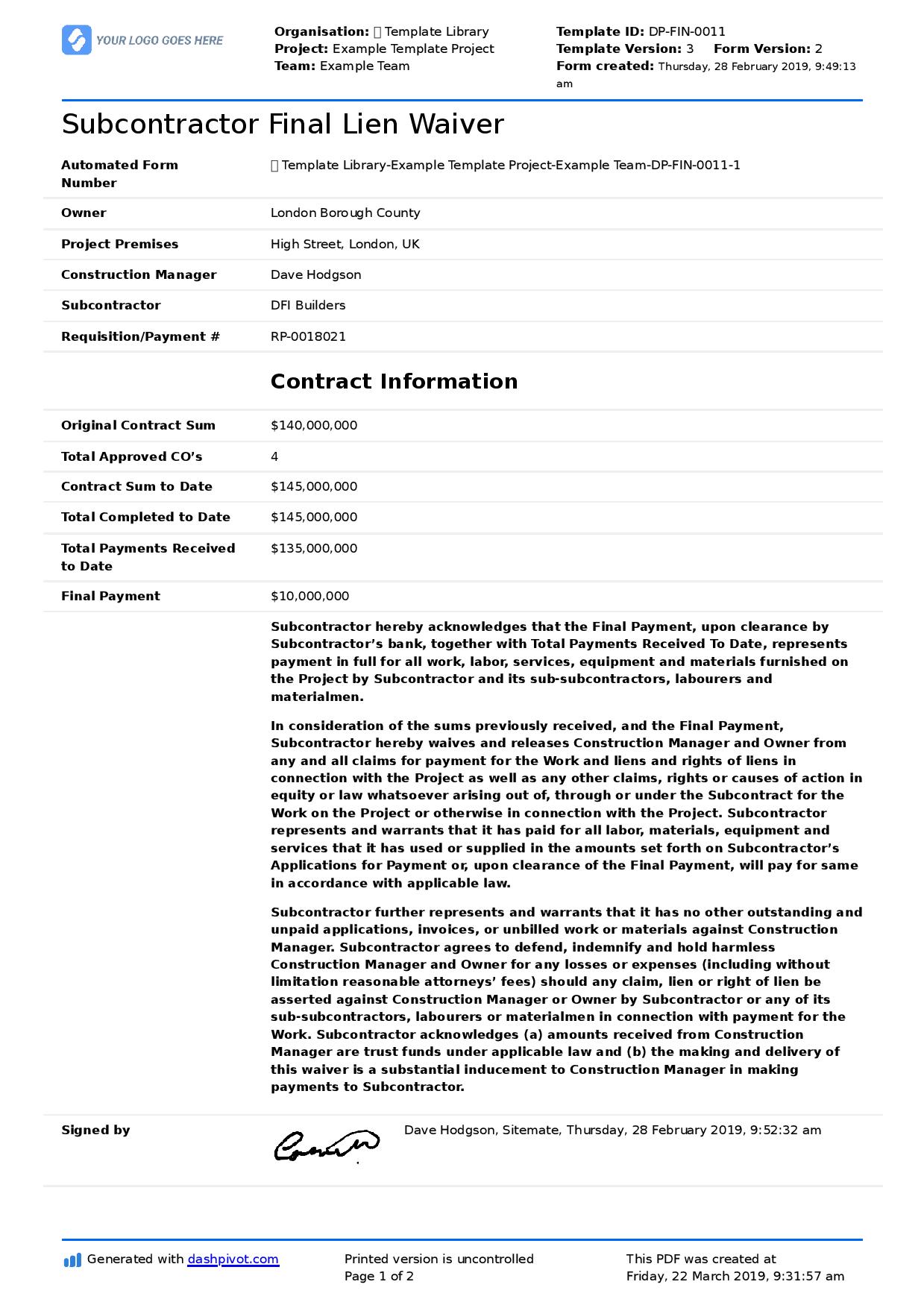Finance – Lien waivers for dummies
Lien waivers for dummies: What you need to know about lien waivers
In this article, we discuss lien waivers, covering everything from their fundamental purpose and different types to practical tips on using them correctly to protect your interests and ensure seamless project transactions.

Lien waivers for dummies...
Lien waivers are one of the things in the construction industry which are extremely common - tied to almost every payment in construction (which is a lot) - but are often misunderstood and misused.
Because of this, we have assembled a lien waivers for dummies article which should give you a good overview of lien waivers.
We're the first to admit that lien waivers aren't simple, and can be easily misunderstood, so we are by no means calling you a dummy by having you read this lien waivers for dummies article.
Use the navigation section above to navigate to the section of the article you want to read, or read through it all to ensure you have all of your lien waiver knowledge and bases covered.
What is a lien waiver?
So the obvious first question in a lien waivers for dummies article is: what is a lien waiver.
A lien waiver is a document which construction parties complete and exchange as a regular part of the payment process. The party receiving the payment e.g the contractor, will sign a lien waiver in exchange for payment.
By signing the waiver, the party receiving payment - in this case the contractor - waives their right to file a mechanics lien.
A mechanics lien entitles the unpaid or unfairly compensated construction party to create a security interest which attaches to the property until the lien claimant is paid or the lien is released.
Lien waivers serve a really important role in the construction industry.
While many industries operate on the instant and obvious exchange of goods and services, construction companies must invest huge amounts of their time and resources in a project before they get paid. The lien waiver serves as insurance for these companies that they will get paid.
Lien waivers are also mutually beneficial. They also ensure that the company making payment e.g the asset owner or operator, only has to pay the contractor or project party once. Without a lien waiver or release in place, the owner may have to pay the contractor and still face the prospect of a mechanics lien.
Lien waivers reduce risk and increase trust between parties. This is especially important on large scale projects, where the timeframes and commitments are even longer.
Not getting paid on a major project could sink a contractor or subcontractor (which does still happen even though we have mechanics liens).
The different types of lien waivers for dummies
As with most documents in the construction industry (and the reason we all need a few for dummies articles), there isn't a one-size fits all document for lien waivers.
In fact, there are four (4) commonly used different types of lien waivers, which each serve slightly different purposes, and carry with them their own important caveats.
Which type of lien waiver being used is not always obvious, and the language and structure of the construction lien waiver templates companies use can be unstandardised and 'wrong'.
Even so, it's helpful to have a high level understanding of the different types of lien waivers, starting with conditional lien waivers.
Conditional lien waivers
Conditional lien waivers are used by parties who agree that the lien will only be waived once payment has been received i.e the lien being waived is conditional on the payment actually being received.
Conditional lien waivers solve the timing mismatch issue which is inherent in these transactions:
Contractors and subcontractors want to be paid (money in the bank account) before they surrender their payment leverage, whilst the paying party wants to ensure that once they pay - the lien is waived.
These conditional lien waivers smooth this timing awkwardness by guaranteeing both parties what they want.
The two types of conditional waivers are for partial payment and final payment, with partial waivers being associated with progress payments and waivers for final payment being for final project payments (you didn't need a lien waivers for dummies to understand this one).
Unconditional lien waivers
Unconditional lien waivers are the more dangerous step sister of conditional waivers. Unconditional lien waivers are issued by project parties who waive their lien rights with no conditions.
This means that once the lien waiver is signed, even if the contractor, subcontractor or supplier is not paid, they have no lien rights.
For obvious reasons, project parties looking to receive payment should use conditional waivers where possible - and owners and paying parties should too - as they help to build stronger and more trusting relationships between stakeholders, who must all work together to deliver a good asset.
How to create, manage and share lien waivers
Like most documents in the construction industry, there isn't a single source of truth when it comes to what a lien waiver should and does include and look like.
Companies often have their own lien waiver framework and style which they have used and relied on for many years.
One of the most important things to be aware of when creating a lien waiver is where your construction operations occur - and whether your state or authority has special or statutory requirements which must be followed (so do a bit of research beyond this lien waiver for dummies article).
The other important part of your lien waiver creation is that it is standardised and professional. These documents are formal documents which should be created and managed accordingly.
Managing lien waivers, along with hundreds of other forms and documents can be a headache, especially for smaller construction companies. For companies struggling to create, manage and share lien waivers in an organised and efficient manner, you can subscribe to a document management system which enables you to digitise and automate the lien waiver process from start to finish - including sharing the lien waiver to be digitally signed off or sharing it as a PDF document like the framework you see below.

What does a lien waiver look like?
One of the more helpful part of these lien waivers for dummies articles is showing an example of what a lien waiver looks like.
This helps to ground all of the talk and jargon into a real-world example which can be referenced or used to shape your own waivers.
The framework below is representative of a subcontractors final lien waiver.
You'll notice how the waiver is laid out, with all of the important record keeping information at the top, the contract information in the middle, and the body and terms of the final lien waiver below - all of which is rounded off by a signature.
Having a reliable framework for every waiver keeps your records clean and secure, and ensures that no one makes 'mistakes' which end up costing you a full payment or your right to a mechanics lien.
Use this lien waiver framework for yourself.
The legalities of lien waivers for dummies
The legalities of lien waivers extends beyond what this lien waivers for dummies article can cover.
But the legalities of lien waivers is obviously extremely important, which makes it important for parties to understand their legal rights and their legal constraints.
As previously mentioned, a lot of this comes down to where your operations and construction projects are located.
If you are in a country, state or area which does have lien waiver regulations, then you will need to make sure your waivers and procedures align with these requirements.
If you are not in one of these regulated environments, then you don't have the same requirements and checks to go through, but you are more vulnerable to issues and disputes arising from confusion and grey areas.
Obviously most companies are pretty good about trying to do the right thing, given that construction parties work closely together, and that reputation is important in the industry.
You can learn more about the legal side of lien waivers here.
Lien waivers for dummies most important tip: Use lien waivers wisely
The construction industry and construction projects are complicated. Tens or hundreds of parties working together with thousands of moving pieces can naturally result in payment and other issues.
Creating and managing your lien waiver process will is an absolutely necessary step to managing your business, while the number one tip from this lien waivers for dummy article is to simply be vigilant and aware of the more common issues associated with lien waivers.
The difference between getting paid and not getting paid can be life or death for a construction company. Being careful with lien waivers and the language used in waivers is not based on the assumption that a payer or asset owner is going to be intentionally vindictive. It is based on the fact that all project parties should have the knowledge and understanding they need to control their own destiny. If a company does work, it should be compensated for that good work.
I hope this lien waivers for dummies article has shed some light on lien waivers for you. While there is a lot more information around the specifics and legalities of lien waivers available to you online, having a good and solid understanding of lien waivers will serve you and your construction career or company well in the long run.

Unconditional Lien Waiver
Use this unconditional lien waiver template to make sure your powerful and dangerous unconditional lien waivers are completed and signed off properly.

Contractors Lien Release Form
Standardise and professionalise your lien release forms so that you get paid and also keep everyone on side.

Subcontractor Register template
Manage all of those subcontractors and their importance contact and contract information with ease, using this proven framework.
Use and edit template for free
Sitemate builds best in class tools for built world companies.
Über Lance Hodgson
Lance has worked for Sitemate for 7 years - helping thousands of industrial companies understand how they can better meet their field record, safety, quality and compliance requirements, and then streamline their systems and processes to better meet these requirements.

